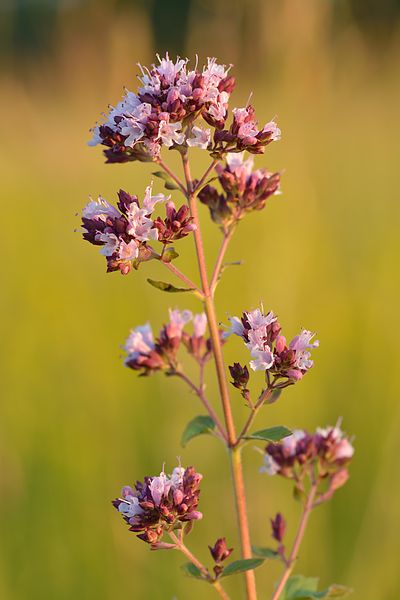 Oregano
Oregano
Common name
N/A
ID
HD0222
Scientific name of the plant
Origanum vulgare L.
Anatomical part for use
N/A
Human use
Cough and cold
Summary
Oregano (US: , UK: ; Origanum vulgare) is a species of flowering plant in the mint family Lamiaceae. It was native to the Mediterranean region, but widely naturalised elsewhere in the temperate Northern Hemisphere.
Oregano is a woody perennial plant, growing 20–80 cm (8–31 in) tall, with opposite leaves 1–4 cm (1⁄2–1+1⁄2 in) long. The flowers are purple, 3–4 mm (1⁄8–3⁄16 in) long, produced in erect spikes in summer. It is sometimes called wild marjoram, and its close relative, O. majorana, is known as sweet marjoram. Both are very widely used as culinary herbs, especially in Italian and French cuisine. Oregano is also an ornamental plant, with numerous cultivars bred for varying leaf colour, flower colour and habit.
Evidence Level
Level 0 (No convinced report of liver injury caused by herbal and dietary supplement)
Hepatotoxicity Description
N/A
Oregano oil
Oregano oil has been used in folk medicine over centuries. Oregano essential oil is extracted from the leaves of the oregano plant. Although oregano or its oil may be used as a dietary supplement, there is no clinical evidence to indicate that either has any effect on human health.In 2014, the US Food and Drug Administration (FDA) warned a Utah company, Young Living, that its herbal products, including oregano essential oil, were being promoted to have numerous unproven anti-disease effects, and so were being sold as unauthorized misbranded drugs subject to seizure and federal penalties. Similar FDA warning letters for false advertising and unproven health claims about oregano essential oil products were published in 2017 and 2018. (Source: Wiki)

Common name
N/A
ID
HD0222
Scientific name of the plant
Origanum vulgare L.
Anatomical part for use
N/A
Human use
Cough and cold
Summary
Oregano (US: , UK: ; Origanum vulgare) is a species of flowering plant in the mint family Lamiaceae. It was native to the Mediterranean region, but widely naturalised elsewhere in the temperate Northern Hemisphere. Oregano is a woody perennial plant, growing 20–80 cm (8–31 in) tall, with opposite leaves 1–4 cm (1⁄2–1+1⁄2 in) long. The flowers are purple, 3–4 mm (1⁄8–3⁄16 in) long, produced in erect spikes in summer. It is sometimes called wild marjoram, and its close relative, O. majorana, is known as sweet marjoram. Both are very widely used as culinary herbs, especially in Italian and French cuisine. Oregano is also an ornamental plant, with numerous cultivars bred for varying leaf colour, flower colour and habit.
Evidence Level
Level 0 (No convinced report of liver injury caused by herbal and dietary supplement)
Hepatotoxicity Description
N/A
Oregano oil
Oregano oil has been used in folk medicine over centuries. Oregano essential oil is extracted from the leaves of the oregano plant. Although oregano or its oil may be used as a dietary supplement, there is no clinical evidence to indicate that either has any effect on human health.In 2014, the US Food and Drug Administration (FDA) warned a Utah company, Young Living, that its herbal products, including oregano essential oil, were being promoted to have numerous unproven anti-disease effects, and so were being sold as unauthorized misbranded drugs subject to seizure and federal penalties. Similar FDA warning letters for false advertising and unproven health claims about oregano essential oil products were published in 2017 and 2018. (Source: Wiki)